PREVICT (Promoting Rights of European Victims) project provides useful lessons about research–based information campaigns to deliver effective victims’ rights awareness efforts.
____

Victims’ rights practitioners spend considerable resources trying to raise awareness. This makes sense. How else are we to demand enjoyment of these rights if we don’t know we have them in the first place?
In 2012, an important EU law for victims of crime – the EU Victims Rights Directive was adopted by EU leaders. 7 years after the adoption of the law, Victim Support Europe (VSE) has carried out an extensive research, the VOCIARE Project, which surveyed more than 800 victim support professionals, law enforcement officials, members of the judiciary and other stakeholders and provided an in-depth analysis of the practical implementation of the Directive. Ultimately, the research showed that victims rarely receive adequate and complete information on their rights and services available.
In view of such reality, VSE and its partners have been advocating for the development of research-based campaigns. Furthermore, because rights awareness is so important for individual empowerment, in the last few years victim support organisations and government agencies around the EU implemented a variety of campaigns that disseminate information about victims’ rights. After all these efforts, do we know what makes for a good victims’ rights awareness campaign?
That same question was raised by eight PREVICT project partners when they gathered together in 2019 to undertake a pan-European study of best practices for ‘Promoting Rights of European Victims’ (PREVICT), development and design of a media campaign aimed at increasing awareness of victims’ rights and increasing help seeking behaviours in participating countries. Participants in the project included Victim Support Europe AISBL (VSE); Transcendent Media Capital (TMC); Victim Support Malta Foundation (VSM); Associação Portuguesa de Apoio à Vítima (APAV); Feher Gyuru Kozhasznu Egyesulet; Udruga Za Pomoc Zrtvama Bijeli Krughrvatske (PZS); Viesoji Istaiga Vilniaus Pazangiu Studiju Institutas (Vilias) and Human Rights In Democracy Center (HRDC) representing Belgium, Malta, Portugal, Hungary, Croatia, Lithuania, and Albania respectively.
An essential, yet largely ignored element of successful campaign implementation, is calculation of its impact. This is particularly true for different types of information provision. Most victims’ rights campaign projects are ending with the campaign launch and delivery, and rarely are the results and the impact of a campaign measured in terms of its effectiveness, outreach, and efficiency for the target groups. Understanding that, it was an essential element of the PREVICT project to put an important focus on impact measurement. The project looked to develop a unique methodology to measure impact of the information tools that have been developed. Subsequently, an information campaign has been developed and launched and impact of the campaign on victims of crimes in Albania (AL), Croatia (HR), Hungary (HU), Lithuania (LT), Malta (MT), and Portugal (PT) has been measured.
Importantly, since potential target groups included not only victims but also practitioners, it was explored and aimed for measurement how practices impact behaviours of stakeholders, such as victim support organisations, policy makers, law enforcement or judiciary.
The campaign balanced qualitative and quantitative evaluations to identify both qualitative and quantitative data useful in determining how and to what extent different information products have had an impact on target audiences.
Having accomplished the project, we would like to share the major project results and distill a series of field-relevant recommendations for designing impactful awareness campaigns in the area of victims’ rights.
With only a short time period to run the campaign, the project team managed to pull off notable results. Let’s take a look at the campaign build-up!
The essence of integrated marketing campaigns is that the chosen promotional activities are connected to the objectives and target groups but most importantly, the campaign strategy ought to be developed based on in-depth research of the best practices and media consumption. The main objectives of the campaign were to have more victims contact and report to police, increase a number of calls to support services, and improve victims’ and potential victims’ awareness of existing support services.
The primary target group of the campaign were victims of crimes in the six delivering countries. The secondary target group was professionals who come into contact with victims (doctors, police, social workers). The final yet essential target group was general public in the six project countries, whose awareness was to be raised about the rights of victims of crimes, which would ensure that potential and future victims are also aware of their rights and how to have them implemented.
A quantitative victim support survey was initiated at the beginning of the campaign to understand better the way to approach the audience group. This survey helped define the demographics of the victims of crime, the type of crimes these victims have been exposed to and the steps needed to start engaging with the victim support organisations. Defining these elements helped craft the campaign and align the material with the needs of the victims.
Research of best practices
The project consisted of several phases. The main objective of the research phase was to inform the partnership about the existing examples of good practices in successfully providing information to victims of crimes, which could then serve the development of the campaign strategy (defining the right tools and channels).
Prior to the focus groups, the partners conducted desk research and produced a best practices report based on the findings. Subsequently, a first set of focus groups was conducted to assess the validity of the research findings. In total, two sets of focus groups were undertaken by partners during the project, with victims of crime and individuals who represent some of the support services in each country. The first victim focus groups were to assess preferred methods of media communication in each country, and the second to assess the effectiveness and impact of the PREVICT media campaign. The best practices findings of the first focus groups were then supported with research undertaken by Transcendent Media Capital (TMC) to better understand statistics of media consumption in each country. The combined findings were used afterwards to design a media campaign.
During the collection of good practices, the consortium conducted desk research and stakeholders consultation in order to select the national best practices.
In order to select the best campaigns, the consortium looked for some criteria’s, such as, categorisation of campaigns (type of campaign, tactics used, the sector of campaign and the instruments used for the campaign); potential target groups; criteria from the communication perspective. Later on, the consortium evaluated the campaigns under the following pre-defined criteria, such as, creativity; message (which would include clearness/intensity/relatability); reach (which will include accessibility/ visibility); value (which will include cost effectiveness/quality/risk); sustainability (which will also include quantity of information transferred/ transferability); and communication (which will also include language used/ user-friendliness/sensibility to differences/diversity).
The focus groups discussed various best practices and based on the main conclusions the campaign design was developed.
Campaign Design
Core Messages
There were similarities of the desired core messaging between all partner countries. The agreement was the messages were to be positive and empowering.
The campaign translated the core messages across every language as part of the localisation effort and only local languages were used in their respective countries.
The campaign message was ‘Reclaim Your Safety’. There was an additional tag-line of ‘Together We Can’.
Scholarly research generally agrees that framing is crucial. Frames organise reality by providing a specific interpretation of how an issue will be discussed. Within victims’ rights campaigns, frames serve to: 1) define the problem; 2) suggest possible remedies; and, most importantly, 3) motivate society to engage. Campaigns that integrate these three framing functions, while being articulate and sensitive to local contexts, tend to be the most effective.
The campaign story focused on the journey of transformation from victim to survivor, with a narrative of positive transformation from victim to triumph aided by the assistance provided by Victim Support Services.
What happened -> what support they got -> the success they have now
Campaign Colours and Fonts Research
Extensive research has been undertaken to assess the meaning behind certain colours which is consistent with the messaging of the entire campaign. Analysis was also incorporated from the focus groups and brainstorming sessions with the NGO partners, as well as market research to find differentiating colours that are unique and not often used for these kinds of campaigns, and it was decided to stick with the colours scheme used for the PREVICT logo itself.
Below are the pantones and the associated meaning behind each colour:
Yellow #f7ec13
represents hope, clarity and positivity
Blue #9dd9e2
peaceful, calming colour; associated with trustworthiness and reliability but also healing and protection
White #fffff
as a positive connotation; stands for safety and cleanliness and represents a new beginning.
Fonts
The font selected for the title font needed to have a clear and clean line that would look visually appealing in all languages across the partner countries and would not be too complex, so as to make reading easier for the people in each country who find reading challenging, perhaps due to a lack of education or other reasons. The typeface for title text selected was Mina Bolt. The modern and clean look of this sans serif font, represents stability, support and clarity, which in the context of the campaign is another important part of the message to the target groups. No one is left alone, stability can be restored, support and information is made accessible for everyone, victims are aided to “reclaim their safety”
This title font was used consistently across all audio visual and print elements of the campaign.
Visual Concept
The campaign included a victim scenario selected by each victim support project partner. The scenario was then developed into a script for video/commercial production including a short of 45 seconds intended for social media and the possibility of TV and a longer narrative version also for social media dissemination.
The decision was taken by the partners to use paid actors instead of real victims, in order to protect victims, however we maintained the use of real victim stories. Interestingly, in some cultures it was difficult to find actors who were willing to play the role of a victim both in a filmed and still photographic context, for fear that it would reflect badly on them personally.
Still photographs from the audio-visual production itself were used across all print and social media campaign material for consistent visual representation.
As a secondary campaign effort, the „The making of“ videos were produced, where behind the scenes still photographs and unedited video shorts captured the making of the campaign, which were also used by the partners for awareness building.
The films started with powerful and exciting introduction: drone shots were filmed to capture soaring images across each of the partner cities to capture the messaging of crime happens everywhere.


The concept then transitioned to a local messaging of real testimonials from real victims/survivors of crime.
The campaign drew from this messaging and cut to the victim testimonials in fast snappy shots across sound bites with victims saying what happened “My ex-boyfriend stalked me” “They broke into my home”, etc and bright toned backgrounds in the campaign colours formed the backdrop for each testimonial.
From the filming of testimonials, important sound bites were extracted from each of the victims telling their story of the journey of accessing support and where they have triumphed in their life now.
Filming took place in studios in each partner country with green screen and white screen to then insert the CI colours, head and shoulder shots of each person in the centre, especially the longer interviews needed to be filmed with two cameras to ensure more interesting visual dynamics, use 50mm lens and 70 or 90mm lens.
The campaign was largely unscripted as the intention was to capture people’s actual stories and testimonials, zoom interviews were conducted with the participant’s beforehand to talk with them to understand their stories and their narratives and make them feel more at ease before film day arrived.
At the end of each film there was a single person say “Reclaim Your Safety”. Then the images of all participant’s merged together where they all say at the same time “Together we Can” whilst quickly fading out into a mass of heads.
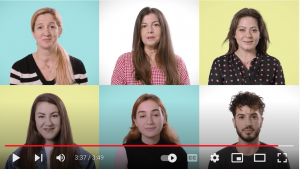
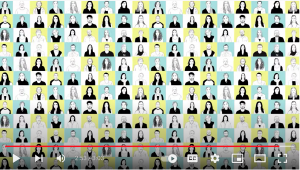
This hand drawn mock-up represents the coming together of the victims’ testimonies at the end. The final fade shot displayed all interviewed participants creating the sense of unity, collective and togetherness. This effect was created by taking still photographs of headshots of 20 willing participants on the street of each city and bringing those photographs together to harmonise the message of global and local, mirroring the opening sequences of the many cities drone shots.
Each film is closed up with a white title screen call to action, with the contact information of each of the partner NGO’s and logos.
Print Media
The print media campaign including all billboards, brochures, infographics, posters and stickers was developed using the same visual concept as the audio-visual content and had the core image being the six faces of the campaign participant interviewees with the same messaging of ‘Reclaim Your Safety’ and ‘Together we can’.
All print media was developed as reusable and made available in print-ready formats for the campaign partners, so they can continue to use the material for as long as they wish and was translated into local languages with the support of the project partners.
Campaign Tools List
After the review of the focus groups and brainstorming sessions, a number of tools were decided as highly desirable by each partner, although some less applicable to some countries than others.
Tools for the pan-European Campaign included:
- Films
- Billboards
- Posters
- A4 infographics handout illustrating the rights of victims of crime and / or the steps to access support.
- 5inch Brochure including essential information about rights and access to information and how to get help.
- Bumper stickers
All tools were produced in the local language and included a clear call to action and contact details. Social media content was boosted to target demographics.
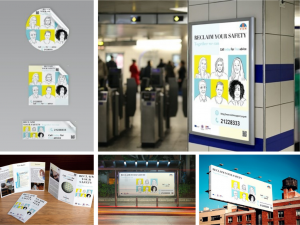
Campaign Timeline
The campaign was released into communities in February 2021 and officially completed in June 2021, allowing for five months of campaigning. However, some partners decided to prolong the campaign to create more impact.
Campaign dissemination strategy
Careful planning and the rigorous implementation of our dissemination strategy was key to the success of our project and its associated campaign. A dissemination strategy was specifically designed for each participating country; the project team started work on the strategy as soon as the research was completed, and the first set of focus groups had met. Once the information tools and products were finalised, the campaign in 6 countries – in Albania, Croatia, Hungary, Lithuania, Malta, and Portugal, was launched, with potential follow-ups until the end of the project and beyond (e.g., posters were not removed from institutions, leaflets continued to be distributed etc.). Victim Support Europe gave the campaign a European perspective, through its network and the opportunities that were created along the way. In particular, timings during the campaign, and the project in general, were adapted to coincide with VSE’s annual events, as well as with the European Day for Victims of Crime on the 22 February 2021.
Campaign messaging
The partners identified common themes they would like the campaign messaging to address: highlighting the reporting of crime, and that Victim Support services are available to assist victims. Before launching the campaign, the project team had to consider population demographics: Malta is the most urban country of the PREVICT partners with urbanisation at about 93%, Lithuania and Hungary are similar at around 71%, Portugal and Albania within the 60% range, and Croatia is the lowest at 57%. In all partner countries, the largest age group is 25 to 54. The second largest is above 65, with Albania as an exception, with more 0-14-year-olds. The ratio between men and women is similar among the countries, with an increase in women as they get older. Mobile phone subscriptions in all countries exceed the population. Internet usage in most partner counties is at about 80% with Malta being the highest at 88%, Albania lags behind with only 69%, followed by Croatia at 76%. All partners use Facebook and a website; and Portugal has multiple social media platforms.
The campaign materials needed to accommodate the different regional demographics – with the aggregated data showing that 25 – 34-year old spend more time on social media, yet many victims of crime are in the 40 – 55 age brackets, so TV and print media are still important. Despite increased use of the internet and social media, TV still plays a dominant role in content consumption in many of our partner countries. Therefore, an effective campaign strategy needed to combine both TV and internet content, such as Facebook; Facebook is the primary social media platform across partner regions, closely followed by YouTube. Any audio-visual production needed to be of the highest standard so that it could be broadcast on television. Print content was equally important as a supplier of information and an educational tool for victims and professionals alike. The print content incorporated the same colours and image themes as the audio-visual content to maintain brand continuity.
Spreading content across three primary platforms was critical to the success of the campaign, to maximise its public impact and exposure: Television, Internet / social media (mobile responsive) and Print media.
The campaign was officially launched on Facebook with a post for the remembrance of the European Day for Victims of Crime (22 February 2021).
Impact assessment
As stated above, the project aimed to develop innovative approaches towards assessing the impact of the information provided. It is for this reason, that the project looked to develop a unique methodology to measure impact of the information tools that have been developed. Subsequently, an information campaign has been developed and launched and impact of the campaign on victims of crimes in Albania (AL), Croatia (HR), Hungary (HU), Lithuania (LT), Malta (MT), and Portugal (PT) has been measured.
The campaign balanced qualitative and quantitative evaluations to identify both qualitative and quantitative data useful in determining how and to what extent different information products have had an impact on target audiences.
Qualitative impact measurement
From a qualitative perspective, perceptions of the materials, how the materials have been used, how they have changed behaviours, are some of the data sets that were explored. It was expected that both forms of data could be difficult to obtain.
The second focus group sessions, whilst only presenting a small sample size of community members, indicated that TV and social media were the sources of greatest visibility of the campaign and found the stories to be mostly relatable. The findings indicated that the campaign succeeded in increasing awareness on the rights of victims in each country and that, on average, there was an increase of around 25% in the number of victims who reported a crime after having received victim support.
Quantitative impact measurement
From a quantitative perspective, the research team looked to identify objective data such as the number of victims looking for support or claiming a right, before and after a campaign, data on number of viewers or listeners, any recorded reactions, or responses to broadcasted material etc.
A range of research tools were used including engagement with media providers, surveys and interviews of victims and other stakeholders to get the best results. Once the campaign was launched, partners in AL, HR, HU, LT, MT and PT worked on collecting data from target groups, and store data in a safe and reliable manner, in accordance with GDPR requirements and VSE and partners’ data protection policies. This data was anonymised.
The intent was to collect data not only from target groups, but also from campaign-based platforms to ensure some comparable data before launching the campaign. In the end, the aim was to able to explain which indicators were effective for the evaluation of the reach and coverage of project activities and project results.
Online information and social media
The online statistics were the main source for our analysis and impact assessment, however other information can be shared, analysed, and compared in and between periods to assess awareness impact of the campaigns:
- Visits to partners websites
- Social Media views, mentions, likes, posts, reposts, direct messages
Traditional media
Traditional media, like TV or radio, was also embedded in the campaign to increase the reach of it. Data about this form of information is harder to collect than that from social media. However, some of the data collected was included in this report
External data
Other information, such as official crime reports can be useful for future and more in-depth analysis. This data was not considered as part of the methodology for this project, however, we believe that for future projects that data can be an added value. It is, however, necessary to have in mind that, although very relevant, this information alone cannot be directly connected to the campaigns, but it might be useful to contrast it with the measured impact obtained through the form analysis.
Results
The campaign proved to be successful in raising awareness on victims’ rights and increasing help seeking behaviour, but feedback shows that its time span way too short to keep a high degrees of awareness about victim rights and support possibilities for victims. It is recommended to extend the life span of the campaign and continue bringing the message and information on a regular basis.
Initially, data collection might be considered as a challenge to victim support organisations that have privacy as a fundamental tool in their work. However, the partners embraced the challenge and admitted the importance that data collection brings to their work. The project manifested that pre-testing techniques and careful planning of impact measurement tend to increase a campaign’s chance of effectiveness. This is a crucial stage in campaign design that requires more focused energy and resources. Pre-testing can range from focus groups, surveys, online surveys, or even more informal conversations with individuals from the target group. PREVICT campaign exemplifies the use of a variety of these pre-testing techniques.
Although victims tend to contact the organisations in person or by telephone, it appears that they do extensive research online. Increasing web presence and the use of social media will be beneficial to increase awareness. It is however clear that social media requires continuous activity to stay relevant. This would require a coordination of regular posts about international and national topics and to change the type of media posts (e.g. text, news article, picture) to reach a broader audience. Using the available analytics data of the various platforms (i.e. Facebook, Google), media posts can be adjusted to fit the audience in the best way. It is important for support organisations to have better access to funding that can be employed to manage these efforts.
The campaign proved that different social media platforms attract different demographics and content needs to be targeted to those demographics or the material runs the risk of being regarded as unrelatable. Social media platforms provide novel venues for victims’ rights campaigns. However, the Internet is not necessarily a more democratic space (there are plenty of social media bottlenecks) that accepts everyone’s voice equally. Thus, this new form of awareness-raising should be used in conjunction with other forms of awareness-raising.
It is important for support agencies to have greater access to funding for both content creation and content management so as to better understand the different types of social media and which population segments frequent these platforms, so greater variety of content can be created and targeted. It is important to increase the budgets for content creation as low production value will not be recognised and viewed by media consumers. There is a lot of content on social media platforms to compete with, so high quality content is important, which means larger budgets are needed to reach this standard. A minimum budget for high quality film content, based on TMC’s experience in the market, should be at least €20.000,00 per video/commercial.
Figure 19 presents the main ways victims learned about the victim support organisation. Overall, the main information point for victims is the local police, where the crime is reported. This is particularly the case in countries like Albania or Hungary. We also see that victims find information online, via social media or on the internet, while searching for support or browsing the websites of victim support organisations. In the case of social media, the main source is Facebook. Other social media platforms, like YouTube or Instagram, play a less important role.
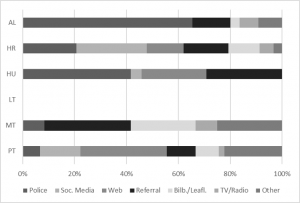
Figure 19 How did the victims find out about the existence of victim support organisations?
Referral from other organisations, from national and municipal authorities (e.g. hospitals) or friends and colleagues plays an important role as well. More traditional media like billboards, leaflets or radio seem to have a relatively small impact in directing victims to the support organisation. TV was rated low as the campaign was only able to get a commercial on TV in one country, Malta. Of those that were aware of the campaign in Malta, the majority came from TV. Lack of impact from TV is likely due to the rarity of content regarding services being televised. Initial investigation into primary types of media consumption prior to the development of the campaign, showed every participating country had primary sources as TV, despite the rise of social media.
There is a greater need for emphasis on public/private partnerships. Due to its relationships in Malta, TMC was able to negotiate free airtime for the campaign on two TV networks over a 30-day period and this was a great source of visibility for the campaign in the country.
Traditional mass media—television, radio, and newspapers— is still a powerful tool which directly informs public opinion regarding victims’ rights issues, but this requires a significant level of coverage. For this reason, it is key that victim support organisations maintain well-oiled relations with media actors. That being said, large media organisations can sometimes have editorial concerns or political inclinations that make them unlikely to broadcast the message of victims’ rights campaigns. In such cases, alternative media channels might prove more effective and campaigners may need to get creative. If victim support organisations can establish greater private sector partnerships and leverage these relationships effectively, it can result in greater distribution of material, reach and awareness building for the promotion of rights of victims and drive greater help seeking behaviour.
Despite greater information awareness being reported by respondents as a result of the campaign, in some countries respondents remained unwilling to report crimes. It is recommended to do a deeper assessment of some of the systemic challenges in these countries such as cultural pressure to not report, inefficiencies or possible lack of empathy in police or judiciary, degrees of effectiveness in the implementation of the EU Victims Right Directive etc. that may deter help seeking or reporting behaviour in victims.
Further extensions can be made to the campaign by defining a strategy to reach additional demographic groups, such as immigrants or male victims or <18 demographic. The stories presented in the videos were very relatable to the victims interviewed but were seen as very typical. The data also shows that this specific demographic makes the steps to report the crime and contact the victim support organisation. The campaign could be extended by designing material which could address victims regularly left out from support due to language, social or legal barriers.
Conventional and social media coverage
Billboards, posters, and leaflets
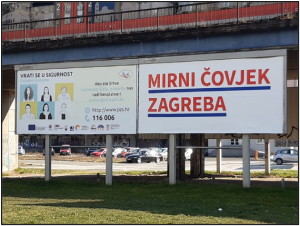
Figure 26 Billboard of the PREVICT campaign in Zagreb, Croatia
The PREVICT campaign focused on a targeted media strategy as identified in earlier surveys of the project, targeting most consumed media in each country to convey the campaign message. Traditional media such as billboards, posters, or leaflets were used and their effectiveness has been mixed. The results of the campaign feedback survey show that, although some victims remember seeing them and initiated the steps to contact support organisations after seeing them, the level of awareness is more moderate than for other media. The 2nd focus groups, gave us the insight that well-placed billboards (e.g. bus stops, subway stations) would be seen and more noticeable, as would posters placed in strategic places, such as hospitals or police stations. As we will see later, leaflets were recognised for their informative and easy to read content. However, they have been also seen by some as a waste since there would be a possibility that flyers would end up being thrown away and people wouldn’t take much interest in them. As we can see in Figure 26, the softer colours used for the campaign material meant that some respondents felt it was difficult for the seriousness of the topic to come across (here next to a political ad).
TV and radio broadcast
TV and radio have been cited as an important source of awareness for the campaign. Although radio ads can remain cheap, TV commercials typically require a large budget. Depending on the country, the time of the day and concurrent programs, a 30 seconds of TV commercial can cost from 30,000 € to a 6-digit figure for a commercial in the break of a major international event such as the football world cup. Although very effective, these paid for TV ad time are often beyond the financial means of victim support organisations. As we can see Figure 27, the campaign commercial was aired on TV in Malta across two independent TV networks for one month of the campaign. This was negotiated as a pro bono offering from the TV station. With this short time span of airing, the ad can be quickly forgotten. Whilst TMC and VSM were grateful for the airing and the viewership achieved, it is important to note that it is important for victim support agencies to foster greater public / private partnerships to enable more consistent national media support for campaigns, to drive greater visibility, as TV is still the primary source of media consumption across all participating countries.
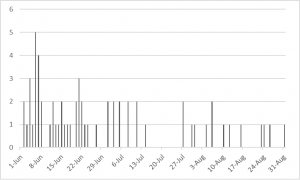
Figure 27 Number of times the video ad was broadcasted on television channel Net TV, Malta
Whilst we could not retrieve total figures from Net TV, given the number of broadcasts, we can extrapolate that the minimum possible views were 189,000 and maximum possible views were 1,890,000.
Online campaign and social media
The great advantage of online and social media advertising is that the platform used can provide the campaign makers with a wealth of data about the users, viewers, and the quality of the viewership and is relatively inexpensive to TV advertising. An example of this can be seen in Figure 30 with the detailed Facebook Insights data of the Facebook page of victim support organisation in Albania (HRDC). We clearly see an increase in density of coverage at the start of the campaign (February 2021) but also an increase of user activity (likes and clicks) in the same period.
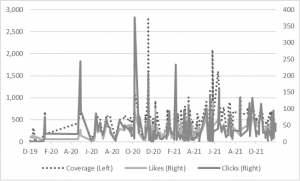
Figure 30 Facebook Insights data for the Facebook page of the HRDC, Albania
High impressions and activity on social media do not necessarily mean high quality of viewership or high level of awareness though. This is something we clearly can see in Figure 31, depicting the length of time spent watching the content (appearances of the video on the users’ Facebook feed) and active views of the users.
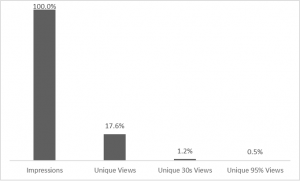
Figure 31 Average lifetime impressions and views of videos posted on the victim support Facebook page of PZS, Croatia
Social media platforms are great way to spread messages to large groups of people. However, the message competes with an equally large amount of content and runs the risk of receiving little or no attention from users before being swiped away. An additional challenge with social media is that different platforms attract different demographics. Victim support agencies need to become cognisant of the different platforms, the associated demographics those platforms serve, and the types of content to appeal to those demographics. It is best practice to create targeted content to each demographic, but due to limited time and budget of the campaign, only one persona, one type of crime and one storyline could be created per country, which then could have affected the relatability reported by respondents where these elements did not connect powerfully to their demographic traits. According to Statista[1] as of October 2021, it was found that 9.3 percent of total active Facebook users worldwide were women between the ages of 18 and 24 years, while male users between the ages of 25 and 34 years constituted the biggest demographic group on the social media platform. It is important to match the platform and the content to the demographic organisations seek to impact.
Where traditional media requires frequent broadcast of the similar content to increase awareness, social media requires frequent and varying content to stimulate the interest of the consumer of the media. A good example of this is the strong interest for an event related to the campaign, namely the Demystify festival in Vilnius, Lithuania, with extensive reach and response Figure 32.
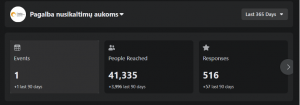
Figure 32 Reach and responses of the Facebook event for the Demistify Festival (August 2021) in Vilnius, Lithuania
As we can see in Figure 33, the festival helped give an additional boost to the reach of the Facebook page to VILIAS, the victim support organisation in Lithuania, also involved in organising the festival.
The value of such edutainment-based campaign tools is that they resolve a central dilemma for campaign designers: how to present situations and characters that people can identify with, while also presenting a unique perspective on the issue in question.
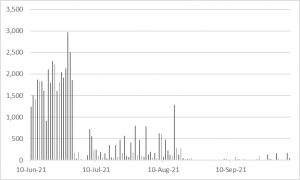
Figure 33 Reach of the Facebook page of victim support organisation VILIAS, Lithuania
Overall, the campaign achieved its goals by raising awareness among victims of crime and the public about key themes, such as:
- The rights of victims of crimes
- The responsible national and local institutions
- The key contacts for victims of crime
- NGOs offering support for victims of crime
- The type of support victims can receive from victim support organisations
Although the campaign had a broad coverage though the dissemination of different material, such as video, leaflets, or billboards, and was very relatable, in many cases the campaign was moderately noticed by victims of crime. At best 44% (Malta), but in most cases less than 30% of the victims reporting a crime had noticed the campaign. This is likely due to television coverage in Malta, whereas there was not this option in other participating countries.
The main method for victims initiating contact with the victim support organisations is by telephone or in person. Social media plays a smaller role in the actual contacting process. However, social media seem to have a stronger impact in raising awareness and providing information about victims’ support and rights. This is particularly true for younger victims (below 24 years old, mainly victims younger than 18). The campaign video had limited viewing on traditional media (i.e. TV) with overall lack of support from TV networks, but the shortened version of the video was shared on social media. Although, dissemination of the video on social media achieved a broader scale than TV, the quality of the awareness was lower.
The campaign showed that once in contact with the victim support organisations, victims report receiving support, especially empathy, emotionally support and referral to the appropriate organisation. Practical support is also highly rated by victims but could be further improved. In general, the organisations received very good feedback from the victims. Overall, the contact with the organisation is having a positive impact on the recovery and restitution decisions of the victims. They tend to be more likely to follow through with reporting the crime and to take the next steps to get the necessary support.
The PREVICT project used innovative tools to collect the information necessary to prepare, organise and deploy the campaign according to research in best practices applying a targeted methodology, as well to collect data and feedback on the effectiveness of the campaign. The results and data have been useful to design the most appropriate campaign and measure the quality of each of its parts.
Finally, in the same way that implementers should not assume that simply providing information will magically solve victims’ rights problems, we do not assume that our recommendations are silver bullets against ineffective campaigns. Many of our findings are likely not new to practitioners, just very costly to implement. Our ultimate goal is that when campaign budgets are being drafted, those in the room making the case for preparatory work draw from our experience that demonstrates the importance and effectiveness of pre-campaign in-depth research, pre-testing, specific framing and impact measurement.
[1] https://www.statista.com/statistics/376128/facebook-global-user-age-distribution/

